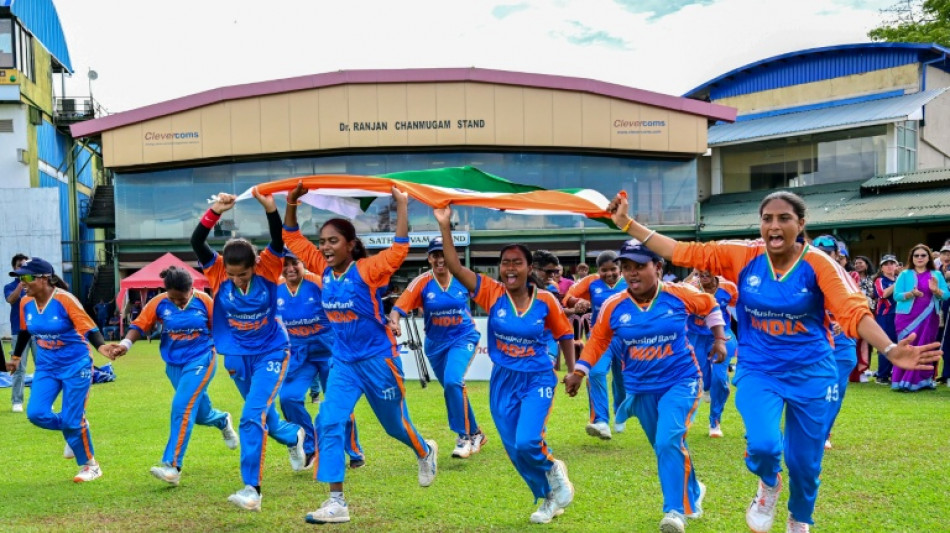

First blind women's T20 cricket World Cup boosts sport
Blind women from India won the world's first T20 cricket championship in Sri Lanka on Sunday, following a tournament seen as pushing the limits of the visually impaired.
The Indian women beat Nepal by seven wickets in the final of the inaugural series, which also involved Australia, Pakistan, Sri Lanka and the United States.
Adeline Roe, 18, from South Australia said she was thrilled to be part of her nation's first blind cricket team and to have the opportunity to travel and meet fellow sportswomen.
"It's amazing that we've got a blind women's World Cup... It's been a wonderful step forward for all women's blind cricket," Roe told AFP during the final between India and Nepal in Colombo.
"I think this is just showing how good it is for women to participate," she said.
India captain T.C. Deepika won more sporting admiration when she led her team to shake hands with the Pakistan players after winning a league match last week.
Tensions off and on the field have been high since a deadly military clash between the nuclear-armed neighbours in May.
India's men refused to shake hands with their Pakistani opponents at the Asia Cup in September and since then neither side has shown signs of making up.
India's blind players were expected to mirror the conduct of their sighted teams, but both sides warmly greeted each other, a friendship that was seen throughout the tournament.
- 'Really empowering' -
Sri Lankan Prime Minister Harini Amarasuriya, who presented the trophy to India, thanked all players for helping raise the profile of the visually impaired.
"This World Cup is more than just a competition. It is a collective statement about access, equity, and the growing participation of women in sport," she said.
"Inclusion must remain central to how we design our national and regional sporting futures, and these kinds of events truly make it possible for us to show that inclusivity in sport."
The tournament is based on the shortest form of cricket, but unlike able-bodied players, who are expected to have sharp eyesight, blind cricketers must play it by ear.
A white plastic ball, the size of a tennis ball, is packed with ball bearings that rattle as it rolls.
The bowler must ask the striker if he or she is ready and then yell "play" as the jingling ball is delivered underarm with at least one bounce.
As in a regular cricket match, each side has 11 players, but at least four must be totally blind who are classified as "B1". Players are required to wear blindfolds for fairness.
Fielders clap to indicate their positions on the field.
Others are partially sighted, classified by how far they can see -— two metres (six feet) for B2 players, six for B3.
Each team can have up to eight totally blind players. Any run scored by a B1 player counts as two.
For completely blind US player Meghan Whalen, 38, the challenge is also to explain to friends and family back home about her new sport.
She learnt about cricket by accident in April after attending a conference for the blind.
"They were there doing a cricket demo and we got a chance to practise bowling and batting, and it was just really empowering and exciting," Whalen told AFP.
It was an opportunity to push, to be challenged, and to see what she was capable of, she said.
"It was just really empowering to know that I could be an asset to a team and help build other people up, and for the visually impaired community as a whole."
A.Hadi--al-Hayat



